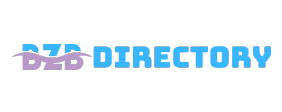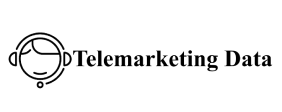Why do you write on your websites? What is the purpose of all this writing online ? Well, often it is to communicate and express yourself , without ulterior motives. Or even to inform and disseminate . In many other cases, however, the goal is to sell something. A service, a product, a professionalism. Today I try to focus on this last objective. Central to commercial objectives is the ability to structure and fill with effective content the so-called “landing pages” or landing pages.
But before we understand how to write a landing page
What is it? It is nothing more than one of the pages on your site that readers / users / potential customers first land on, for example by clicking a link on Facebook, clicking an advertisement, clicking a result reported by search engines, etc. Potentially, each of your pages can be a “landing page” , both in terms of visibility (a page that “positions” well on Google for example) and in terms of commercial potential (on each page you can indirectly communicate how reliable your products-services are or how productive a certain action can be for the customer). Let’s see, therefore, which criteria are best to follow to write the most effective text possible for a landing page.
8 ingredients to Writing Landing Page Copy: 8 Tips convince the potential customer
A Concept . When you write on the web, you often think: “ I have to put this information, then say this other thing and then what to say about that concept… ”. Different results with this way of acting: sometimes you manage to cover a topic well, integrating the main information and making appropriate connections, more often instead you usa email list end up in a cauldron of too many concepts that are correlated with each other but not explored in depth enough. In the excess of information to which the reader is subjected, today more than ever, the vast majority of the time it is more useful to make a choice that aims at a single topic, at a very specific path: this approach must be the law when it comes to writing the text of a landing page .
Less is More – Writing Landing Page Copy: 8 Tips Ludwig Mies van der Rohe
A nod to SEO Copywriting is worth doing: as valuable and crucial as it is to write in a natural and fluid way, for readers, it is good to try to direct your writing towards the adoption of a single keyword, appropriately dosed also in the page title and various meta tags. 3 Know your target audience . Perhaps this point should be the premise of every text you write. Who is the target audience of your landing page and what do they want? How do they search for information? What words and phrases do they want to read? 4 Write for the reader . This point is connected to what was expressed in point 2. The priority in writing a text for the web, in general, must always be aimed at the reader : a fluid, simple, non-repetitive writing, not expressly designed for search engines.
Furthermore, (to simplify a lot) Google wants to move in
A direction of interpretation of a web text and the value of the relative page that is based more and more on an analysis that is as semantic as possible (and less on incoming links, for example). 5 Pay attention to the title . One thing that many web readers have in common, if not all, is the lack of time available. Among the thousand informative stimuli of every day, you have to be able to make your own stand out. The first test to top content distribution channels such as social media overcome to win the reader’s attention is through the title, which must be: informative; capable of triggering the reader’s curiosity; quickly show the main benefit of a certain product-service to the reader-customer; possibly short, so that it can also be used effectively in Facebook and Google ads.
6 Focus on benefits . Not just in the title, on the contrary: the entire landing page must clearly show all the benefits that the product-service brings to the customer and what problems it solves.
The potential customer in fact
Will implicitly ask himself what advantages he will get from it. The concept of “problem-solution” must therefore play a leading role. 7 Call to action aleart news and urgency . The user will hardly return to your page, so it is good to bring them “to action” immediately. 8 The foot in the door .
Psychology teaches us that it is not productive to ask for too much too soon: the initial conversion objective must be simple, given that – especially in b2b – the commercial negotiation is often long and full of information exchanges. In essence: it is better to aim to obtain a contact even as simple as an email rather than trying to obtain entire sets of demographic data or trying to sell immediately.



